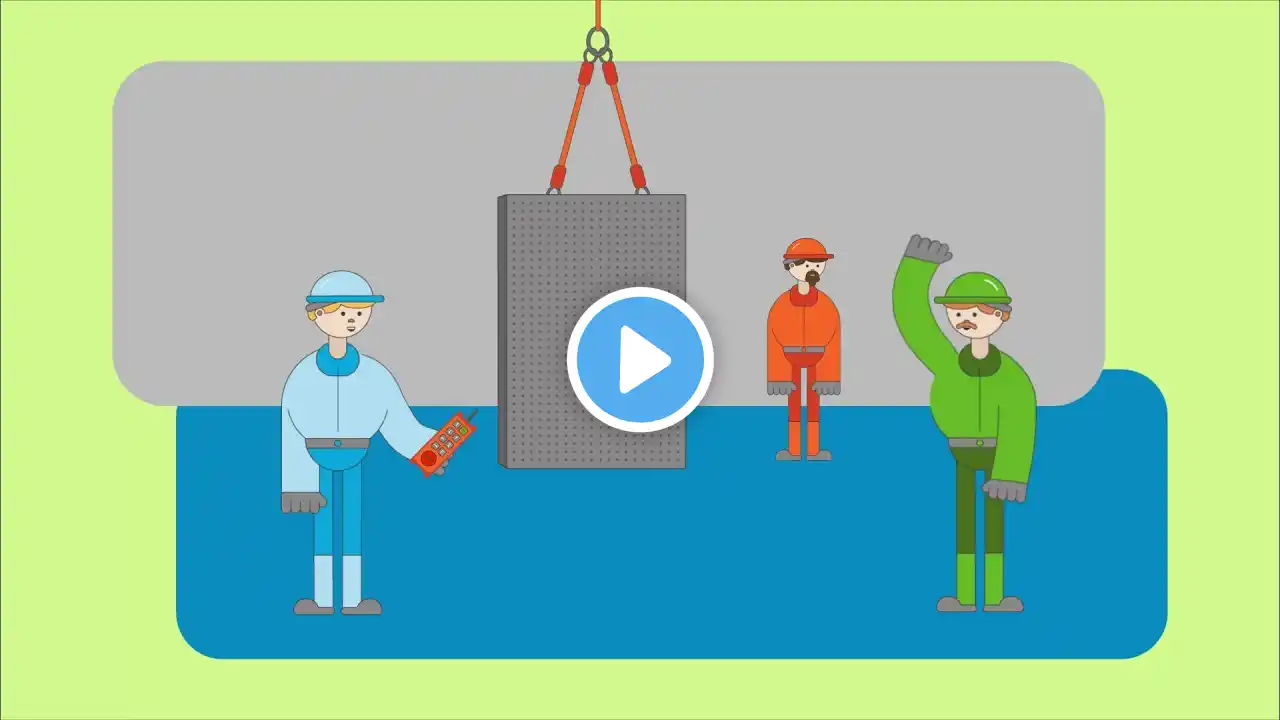
Crane Accident Animation Video - Crane Lifting Operation & Work Safety Training
Crane Accident Animation Video - Crane Lifting Operation & Work Safety Training Crane safety in the workplace is essential to prevent accidents, injuries, and equipment damage. Proper training and certification of operators ensure they understand load capacities, stability factors, and safe lifting techniques. Regular inspections and maintenance of cranes help identify potential hazards such as mechanical failures or worn-out components. Workers should always follow safety protocols, including the use of personal protective equipment (PPE), clear communication with signallers, and maintaining a safe distance from lifting zones. Additionally, adhering to load limits, avoiding sudden movements, and considering environmental factors like wind speed can further enhance workplace safety. Implementing strict safety measures not only protects employees but also improves operational efficiency. Crane Collapse Incident: A Visual Breakdown The animation video presents a detailed reconstruction of a crane collapse incident at the Baraka Nuclear Power Plant, emphasizing the critical safety failures that led to the tragedy. The work involved window flashing on a chlorination building using a mobile crane equipped with a man basket to transport the maintenance crew. The team included Muhammad, the crane operator, and workers Jit and Raja, who were lifted 32 meters to perform the task, while Jashim and Laxman managed taglines from the ground to stabilize the basket. As the crane operator adjusted the boom to reach the designated height, the animation highlights the discrepancies between the planned and actual operational parameters. The crane’s load chart specified a safe lifting distance of 32.1 meters at a maximum load of 0.65 tons. However, on this occasion, the boom extended beyond 34 meters at a shallower angle than recommended, and the actual lifting load reached 900 kilos—far exceeding the safe working load of 500 kilos. Crucially, the video illustrates how critical safety features were deliberately bypassed. The Power Take-Off (PTO) switch, responsible for controlling the crane’s mobility, was turned off, while the main bypass switch was activated, effectively disabling all built-in safety mechanisms. This included the crane's protection hood and its wheel lock system, allowing unintended movement. The consequence was catastrophic. The crane toppled over, causing the boom and basket to crash into a trench. The impact proved fatal for Raja, who was in the basket, and Jashim, a tagline holder who was struck by the falling structure. Jit and Laxman sustained serious injuries, with one requiring hospitalization and the other suffering a lost-time injury. This animation serves as a powerful learning tool, reinforcing the necessity of stringent safety compliance in lifting operations to protect lives and ensure workplace safety. #cranesafety #workplacesafety #industrialanimation


















